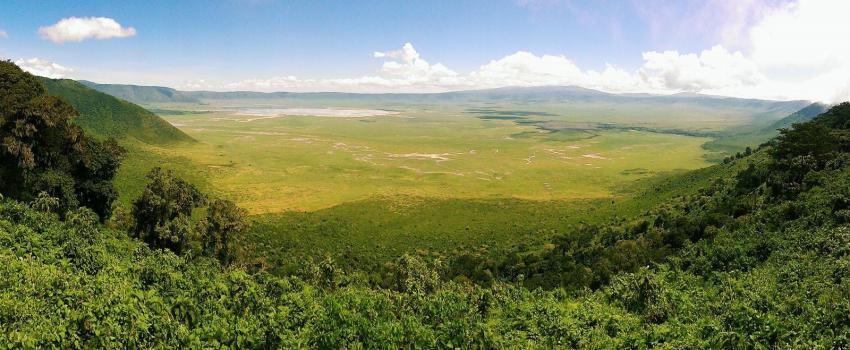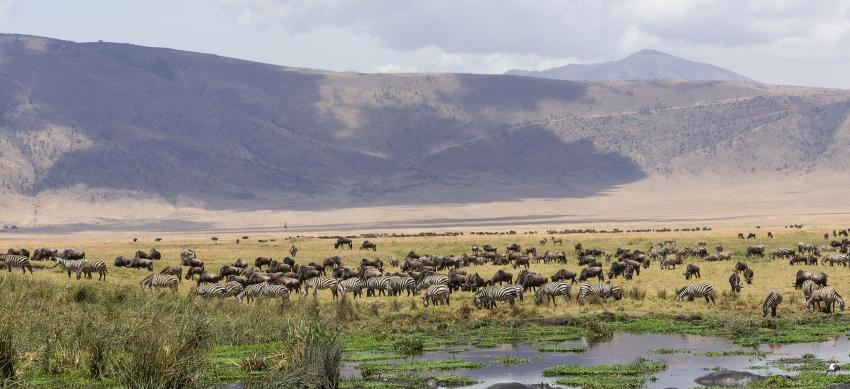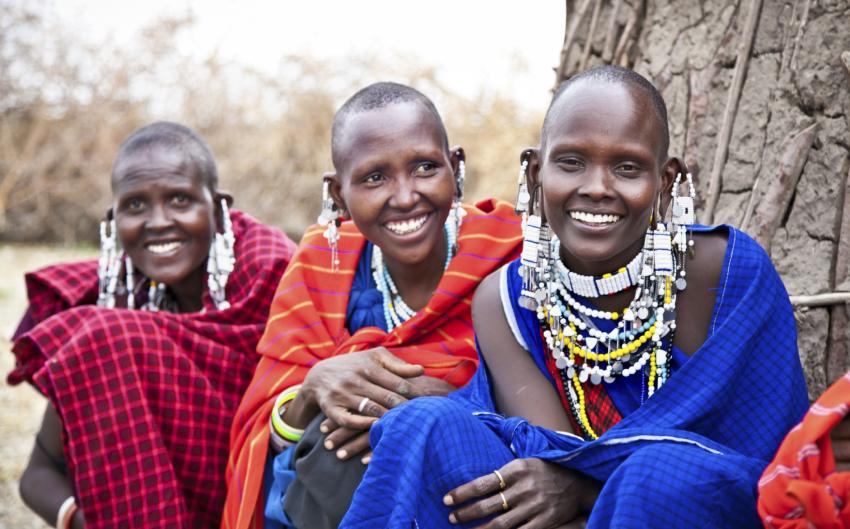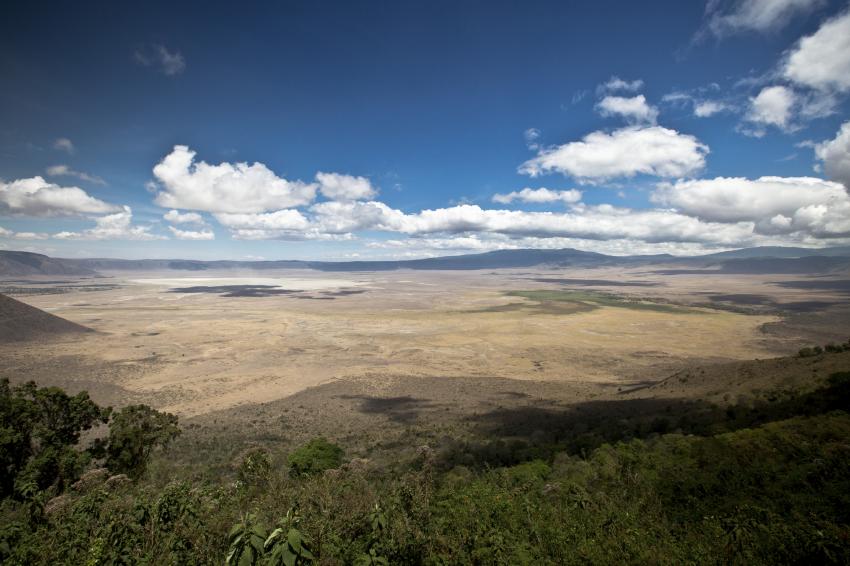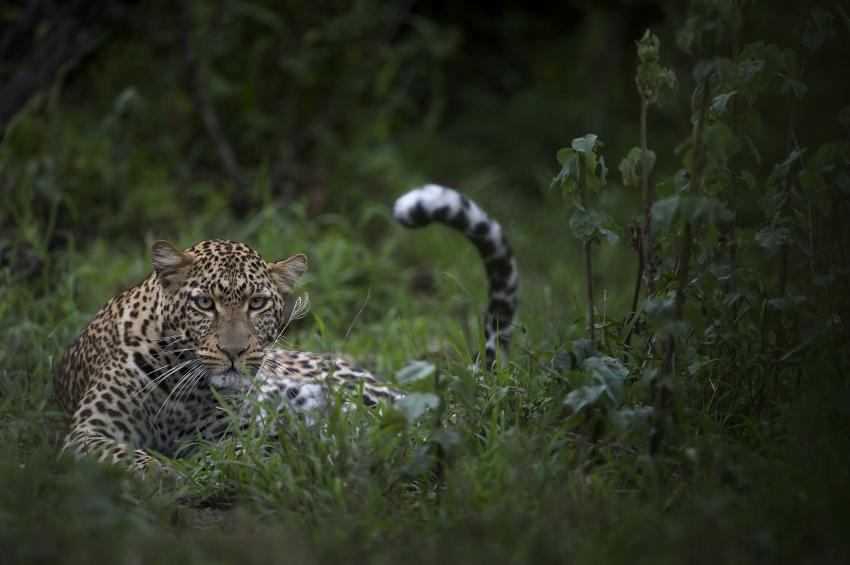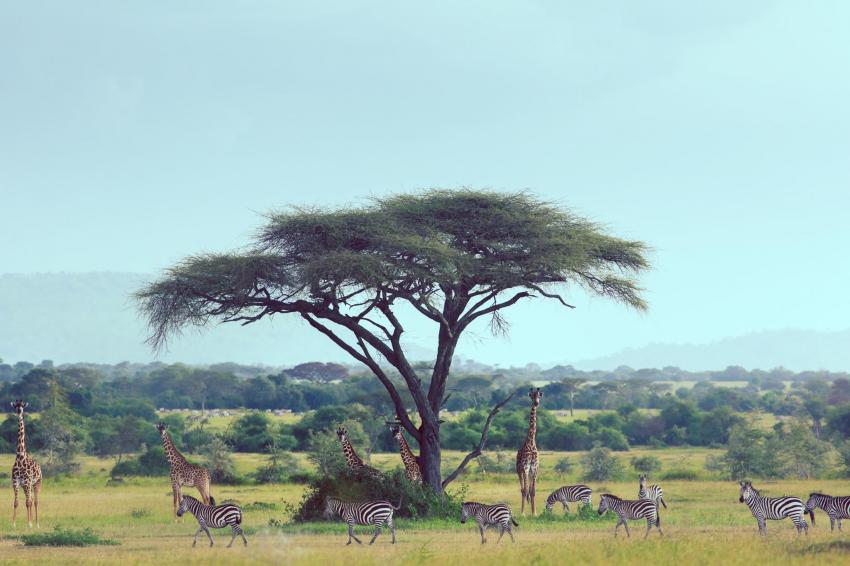'' The crater game viewing is truly incredible, the landscape and views of the surrounding Crater Highlands are out of this world.''
Nowhere else in Africa does such a varied cast of animals gather to graze, live, hunt and die. On one of Ngorongoro's Crater you will encounter some of the 30, 000 animals in the crater's diverse range of habitats: swampy wetlands, open savannah, woodlands and lake-all within the steep rock walls that climb through thick forest some 600m to the rim.
The Ngorongoro Crater, one of the eighth wonder of the world, is set in northern Tanzania, sharing part of the Serengeti plains to the north-west and with towns of Arusha, Moshi and Mount Kilimanjaro, to the east, and forms part of the unique Serengeti ecosystem. A major ecological survey of the Serengeti Reserve (which at the time included the Ngorongoro) by Dr. Bernhard Grizmek and his late son in the 1950's resulted in the establishment of the Ngorongoro Conversation Area in 1959. At the moment the conservation area is administered by Ngorongoro Conservation Authority, an arm of the Tanzanian government, and its boundaries follow the boundary of the Ngorongoro Division of Ngorongoro district. It has also been believed to have been taller than the famous Kilimanjaro before its inactive volcano collapsed and formed unbroken caldera crater 610 meters deep, 13 mile (20KM) wide about two million years ago.
The conservation area covers about 3185 sq miles (8259 sq Km), the crater covers about 100 sq (260 sq Km). It is also a home to over 3000 different species including the endangered black rhinoceros; the crater has a forest and lake which support ecosystem in the park. Ngorongoro crater has been listed by UNESCO as world heritage site.
On Ngorongoro conservation area is where the world famous archaeological site of Oldupai George is allocated. The discoveries of fossil footprints on lava rock as well as ancestral humans remain which are believed to be 3.8 million years old can be seen at the museum. Two main geological rifts run through the Ngorongoro area. Nine volcanoes in the Ngorongoro highlands were formed during the past four million years. One of these, Oldonyo Lengai (Mountain of God) is still active. Over millennia the ash and dust from each eruption has been carried by the winds to form the fertile soil of the Serengeti plains.
The earliest sign of mankind in the ngorongoro is at Laetoli, where hominid footprints are preserved in volcanic rock 3.6 million years ago. Further north on the tourism circuit, Olduvai George has yield a wealth of hominid and animals remains.
The Maasai Community of the Ngorongoro Crater.
For thousands of years, a succession of cattle herding people moved into the Ngorongoro area, lived there for some time then moved on, sometimes forced out by other tribes. About 200 years ago, the Maasai arrived and have since colonized the area in substantial numbers with their traditional way of life allowing them to live in harmony with the wildlife and the environment. The Maasai are allowed to take their animals into the Ngorongoro crater for water and grazing but not to live or cultivate there. Elsewhere in the Ngorongoro, they have the right to roam freely. Visitors normally stop the Maasai cultural homestead, one on the road to the Serengeti National Park.
Birds watching in Ngorongoro Crater
The mixture of forest , canyons, grassland plains, lakes and marshes provide habitats for a wide range of birdlife. White storks, yellow wagtails and swallows mingle with the local inhabitants: stilts, saddle-bill storks, ibis, ruff and various species of ducks, lesser flamingos fly in to feed from the their breeding grounds at lake Natron. Distinctive grasslands birds - ostrich, kori bustards and crowned cranes-abound.
Safari and Wildlife Experience
Ngorongoro Crater, a deep volcanic crater is the jewel in Ngorongoro's crown. It is the largest unflooded and unbroken caldera in the world. The Ngorongoro Crater is 19.2 kilometer in diameter, 610 meters in depth and 304 square kilometers in area. The rich pasture and permanent water of the Ngorongoro crater floor supports a large resident population of wildlife of up to 25000, predominantly grazing animals. These includes wildebeest, Zebra, Gazelles, Buffalos, eland, heartbeest and warthong. The swamps and forest provide additional resources for hippos, elephants, waterbucks, reedbucks and bushbucks, baboons and vervet monkeys. Bull elephants of the Ngorongoro crater regularly descend to the Ngorongoro crater floor. The large breeding herds wander throughout the forest rim where they find the most suitable food. The steep inner slopes provide a habitat for dikdik and the rare mountain reedbuck. Jackals thrive in the crater and bat eared foxes live in the short grass areas. Predatory animals in the Ngorongoro Crater like leopards, lions, cheetahs, serval cats, live off the abundant wildlife; large packs of hyenas roam the Ngorongoro crate, making their own skills and scavenging from others. Lions in particular are abundant in the Ngorongoro Crater. Thanks to the anti poaching patrols, the black rhino in the Ngorongoro Crater are relatively safe and the numbers are increasing with time. Ngorongoro Crater is one of the few places in East Africa where visitors can be certain of seeing the Rhino in its natural environment. Birdlife in the Ngorongoro Crater is Superb. The mixture of forest, canyons, grassland plains, lakes and marshes provided habitats for a wide range of wildlife.
Things to be seen around Ngorongoro crater are Laetoli and Olduvai Gorge, Lake Magadi, Lerai Forest, Gorigor Swamp, The Grassland, Oldonyo Lengai, Olmoti Crater, and Embukaai Crater, Lake Natron, Gol Mountains (Oldonyo Gol hills), Nasera Rock, Oldeani Mountain and Lake Eyasi.
Best time to visit Ngorongoro Crater
Many people wonder when is the best time to visit Ngorongoro crater. The crater is a year round destination as most of the animals remain in the crater year around, ensuring great sightings no matter when you decided to visit the Ngorongoro Crater. Check out our well designed safari packages that feature Ngorongoro Crater.

 1-321-766-6821
1-321-766-6821 
